
Tooth Decay: Causes, Types, and How to Prevent It
Tooth Decay: Causes, Types, and How to Prevent It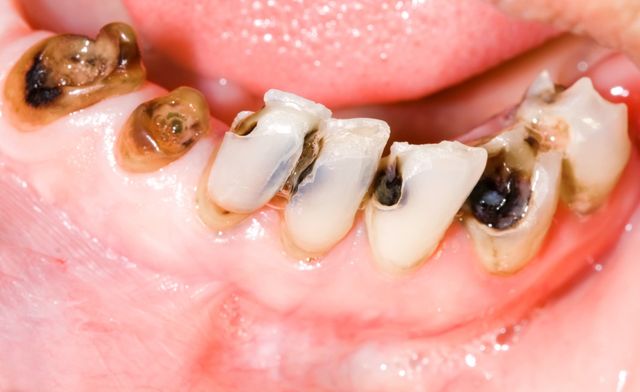
Tooth decay, also known as dental caries or cavities, is one of the most common oral health problems worldwide. But contrary to what some might think, tooth decay doesn’t happen overnight. It’s a gradual process that develops under the right conditions — and once it starts, it can move quickly if left unchecked.
In this article, we’ll explore what causes tooth decay, the different types, and the most effective ways to prevent it.
What Causes Tooth Decay?
Tooth decay begins when specific types of bacteria in the mouth feed on sugars and starches from the food you eat. These bacteria produce acids that erode the protective enamel on your teeth. Over time, this erosion creates tiny holes — cavities — which can deepen and spread if not treated.
There are three key ingredients that must be present for decay to develop:
-
Acid-producing bacteria – Not all bacteria in your mouth are harmful, but certain ones, like Streptococcus mutans, produce acid that breaks down tooth enamel.
-
Sugary or starchy foods – Foods high in sugar and carbohydrates fuel these harmful bacteria.
-
Vulnerable teeth – Teeth lacking proper fluoride protection or with weak enamel are more likely to suffer decay.
Once tooth decay begins, it doesn’t always remain slow. When the decay reaches the dentin (the layer beneath the enamel), it can spread much faster. If it reaches the pulp — the inner part of the tooth that contains nerves and blood vessels — it can cause severe pain, infection, and may even require a root canal or extraction.
Tooth Decay Is Contagious
Surprisingly, tooth decay can actually spread from person to person. Sharing utensils, drinking from the same glass, or even kissing someone with active cavities can transfer cavity-causing bacteria. That’s why it’s important to practice good oral hygiene not only for yourself but also to protect others.
Types of Tooth Decay
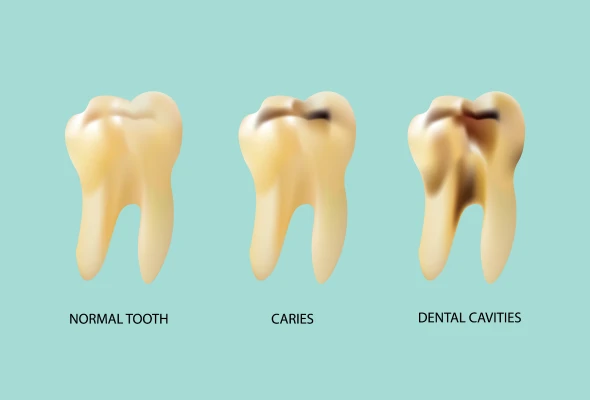
There are three main types of tooth decay, each affecting different areas of the tooth and occurring more commonly at certain ages:
1. Smooth Surface Decay
This type of decay occurs on the flat, smooth sides of the teeth, often between them. It’s more common in young adults (ages 20–30) and typically progresses slowly. With early detection and good oral care, it can often be reversed or managed without extensive dental work.
2. Pit and Fissure Decay
This type of decay targets the grooves and crevices of the molars — areas that are harder to clean. Since food and bacteria can easily get trapped here, it’s a common site for cavities. Pit and fissure decay can develop quickly if these areas aren’t thoroughly brushed.
3. Root Decay
Root decay is the most aggressive form of tooth decay and often affects older adults, particularly those with receding gums or dry mouth (a common side effect of many medications). It begins on the exposed roots of teeth and is harder to treat due to the softer structure of the root surface.
How to Prevent Tooth Decay
Tooth decay may be common, but it’s also highly preventable. Here are some of the most effective ways to protect your teeth:
-
Brush twice a day with fluoride toothpaste
-
Floss daily to remove plaque between teeth
-
Use fluoride mouthwash for extra protection
-
Limit sugary snacks and drinks
-
Visit your dentist regularly for cleanings and checkups
-
Consider dental sealants for added protection on molars
-
Stay hydrated, especially if you experience dry mouth
Even though harmful bacteria are always present in the mouth, maintaining consistent oral hygiene can keep decay from ever taking hold.
News in the same category


Vaseline and Lemon: An Inexpensive and Effective Skincare Remedy

Eliminate Plantar Warts with These Natural Garlic Remedies

The Essential Guide to B Vitamins: Benefits, Types, and How to Get Enough
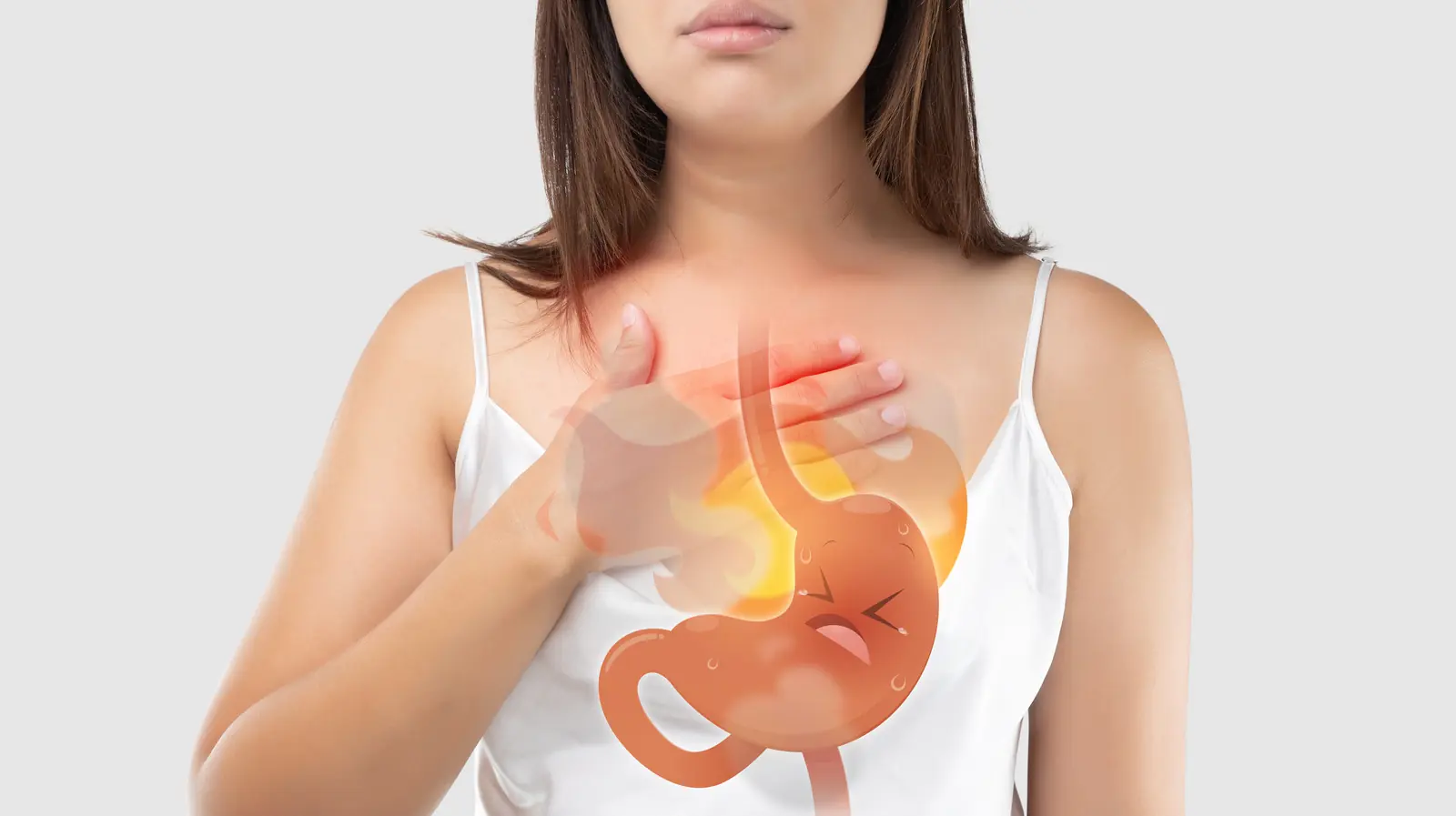
What Is Acid Reflux? Causes, Symptoms, and How to Treat It

The Timeless Wisdom of Dr. Norman Walker: The Philosophy of Health and Longevity

💪 45 and Tired? This Grandpa-Approved Beetroot Drink Might Change Your Life

4 Foods You Should Never Combine with Honey Due to Toxin Risk — Many People Consume Them Without Knowing
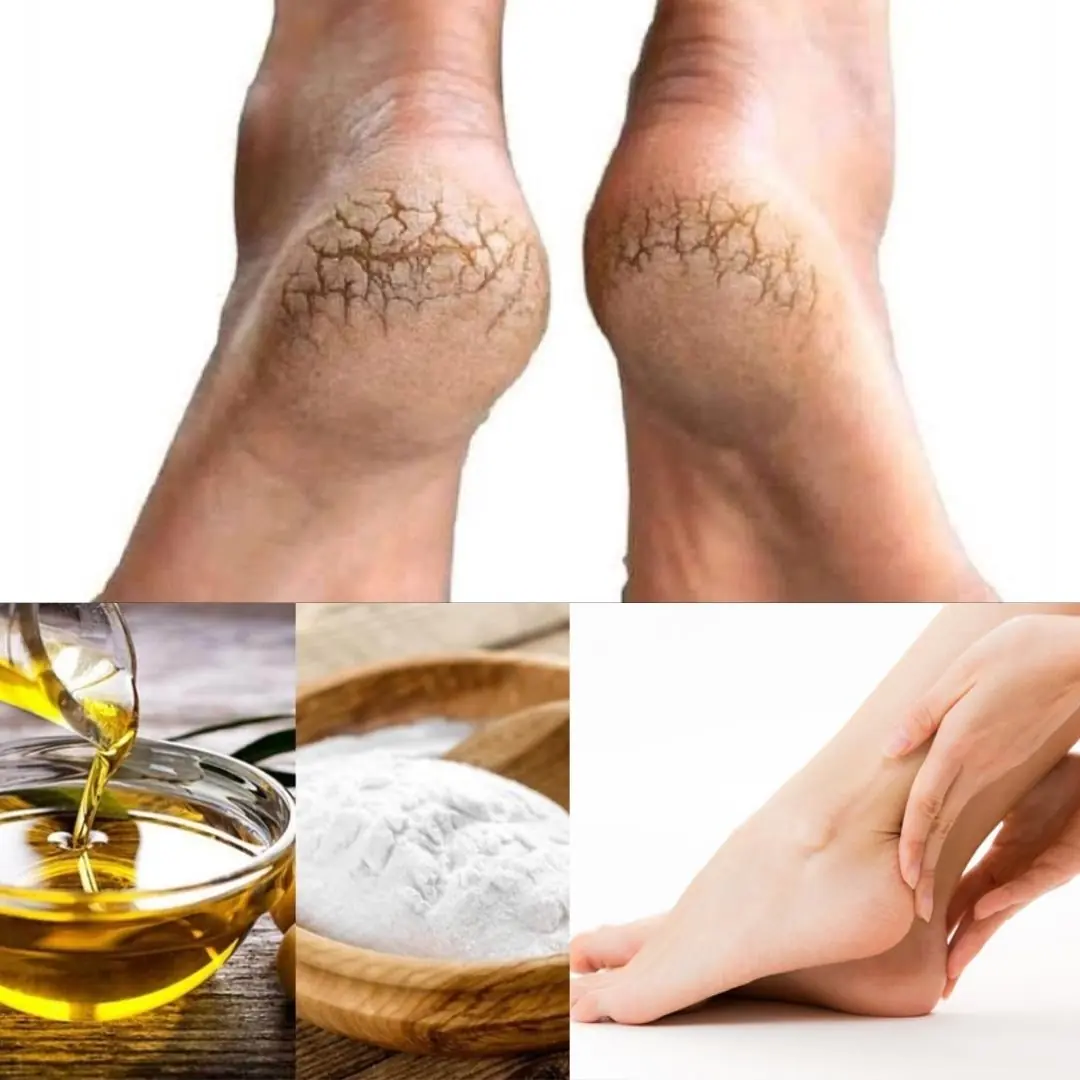
Get Baby-Soft Heels: Olive Oil and Baking Soda for Cracked Heels

Natural Remedy for Liver Cleansing: One Tablespoon Before Bed

24-Year-Old Woman Suffers Stomach Perforation Due to One Common Morning Coffee Mistake

65-Year-Old Man Passes Away at Night: Doctor Warns Against 4 Types of Drinks Before Bedtime

Carrot Orange Ginger Juice: A Nutrient-Packed Powerhouse for Your Health

The Powerful Health Benefits of Lipton, Cloves, and Ginger: Why Every Woman Should Try This Wellness Trio

What Are Eye Floaters? Here’s What to Do If You Start Seeing Them, According to an Eye Doctor

What It Means When Someone Who’s Passed Away Appears in Your Dream — It Might Be More Than Just a Memory
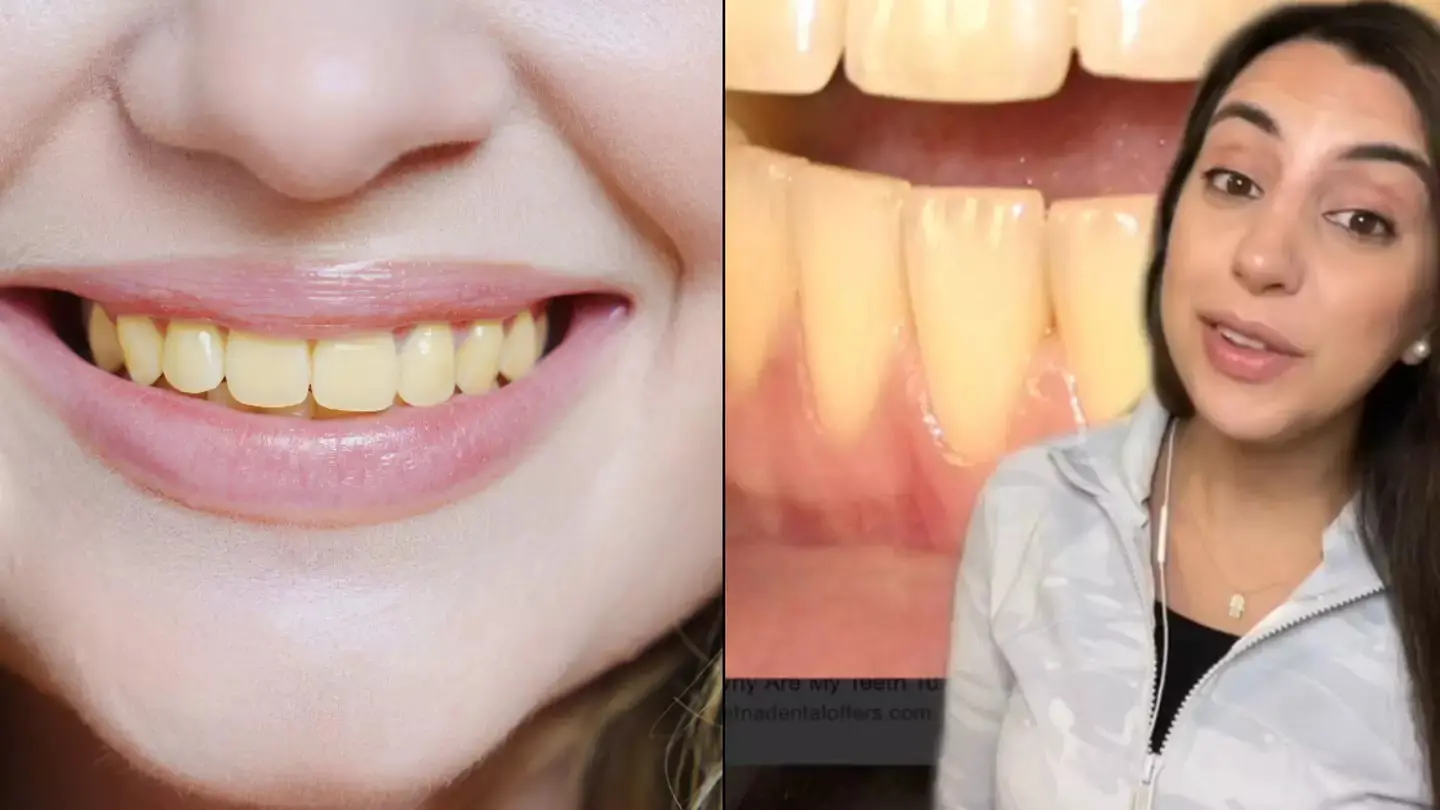
Dentist Explains 7 Key Causes of Yellowing Teeth and How to Prevent It
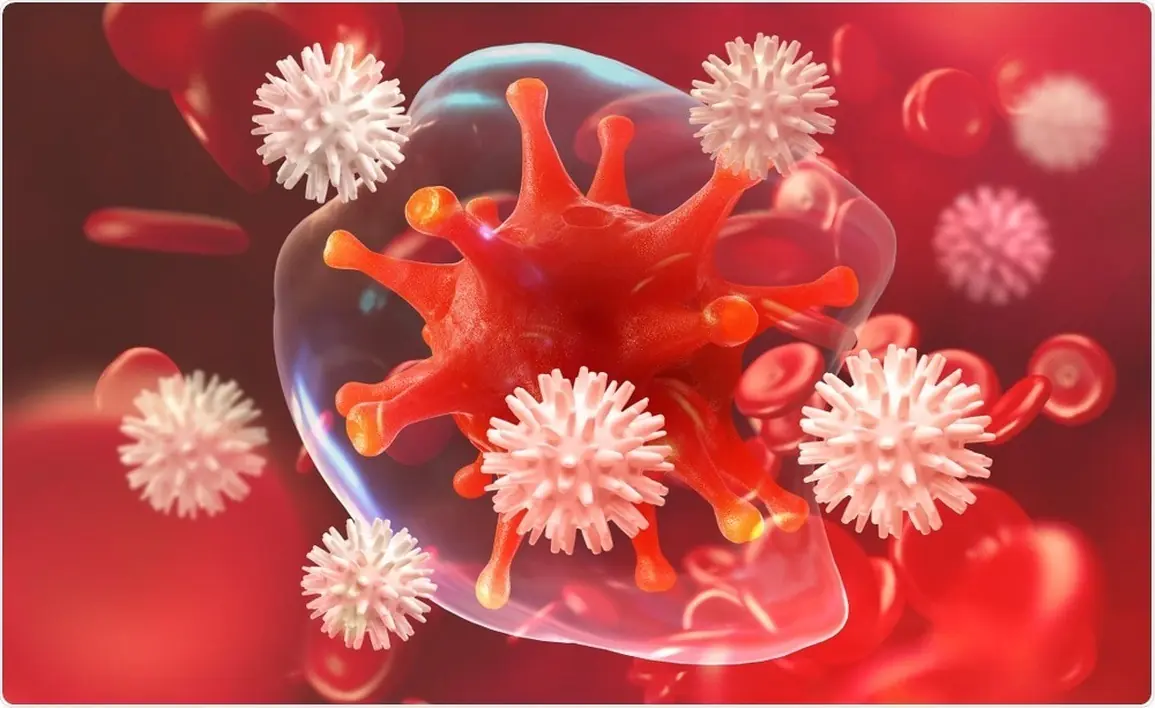
6 Types of Pain That Signal Cancer Cells May Have Reached the Final Stage
News Post

MY DYING NEIGHBOR CALLED ME AND ASKED ME TO VISIT HER URGENTLY – THEN GAVE ME HER SECRET WOODEN BOX

I WOKE UP TO FIND MY FLAG GONE—AND A $20 BILL ON MY DOORSTEP

I TOOK MY NEPHEW TO THE FARM TO TEACH HIM A LESSON—BUT HE ENDED UP TEACHING ME ONE

Caring for our newborn meant missing dinner—my husband didn’t save me a plate

During the funeral, a crow lands on the little girl’s coffin

What This Oncologist Notices First in Most Cancer Patients Might Surprise You

Why you should never flush ticks in the toilet

Vaseline and Lemon: An Inexpensive and Effective Skincare Remedy

Eliminate Plantar Warts with These Natural Garlic Remedies

Experts Clash Over Claims Of Vast Underground City Beneath Pyramids — Discovery Sparks Global Debate

My Neighbor Tried to Kick Me out of My Own Home, Until I Found a Note That Said 'You Need to Know the Truth About Your Husband' — Story of the Day

The Essential Guide to B Vitamins: Benefits, Types, and How to Get Enough

What Is Acid Reflux? Causes, Symptoms, and How to Treat It

The Timeless Wisdom of Dr. Norman Walker: The Philosophy of Health and Longevity

My Husband Handed Me a Baby on Mother's Day—But When I Found Out Whose Child It Was, My World Collapsed

💪 45 and Tired? This Grandpa-Approved Beetroot Drink Might Change Your Life

Is Death an Illusion? Quantum Physics Offers a Surprising Perspective

After Wife Leaves Family, Man Raises Child Alone, Woman Contacts Their Daughter 20 Years Later – Story of the Day
